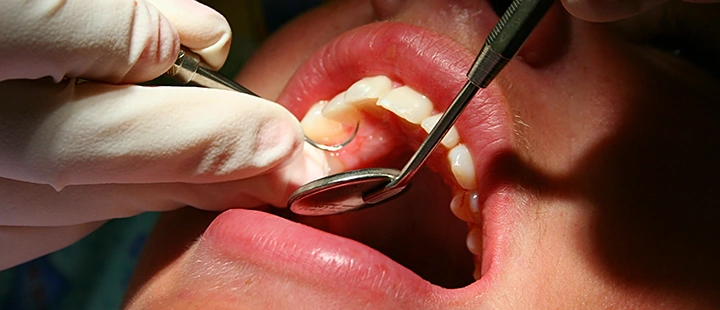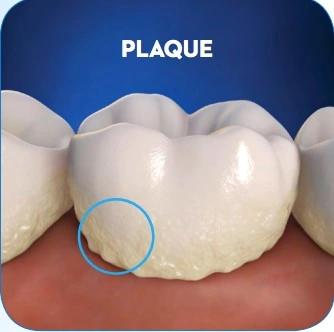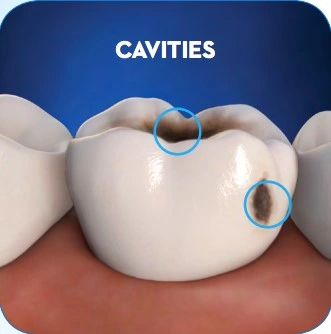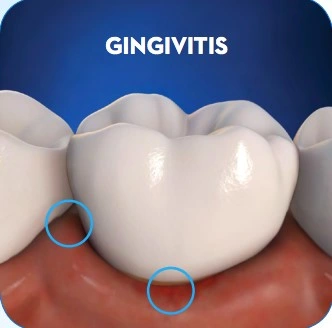What is Plaque?
Dental plaque is a sticky, colorless or pale yellow film that is constantly forming on your teeth. When saliva, food and fluids combine, plaque - which contains bacteria - forms between your teeth and along the gum line.
Dental plaque begins forming on teeth 4-12 hours after brushing, which is why it is so important to brush thoroughly at least twice a day and floss daily.
How Can Plaque on Teeth Affect My Oral Health?
Plaque is the root cause of many oral health issues. The bacteria in plaque produce acids that attack tooth enamel causing cavities. The bacteria in plaque can also cause the early stage of gum disease called gingivitis. Plaque can also contribute to bad breath and can make your teeth look dingy and yellow.
Plaque on Teeth Causes Cavities and Gingivitis
Plaque on Teeth Causes Cavities and Gingivitis
If plaque is not regularly removed from your teeth by proper brushing and flossing, it mineralizes into tartar, a hard, yellow or brown deposit that tightly adheres to the teeth and can only be removed by a dental professional. If tartar is not removed it can lead to more serious gum disease.
How to Remove Plaque from Teeth
Fighting plaque is the most critical factor in protecting and preserving your teeth, and gums, for a life-time.
SHARE





